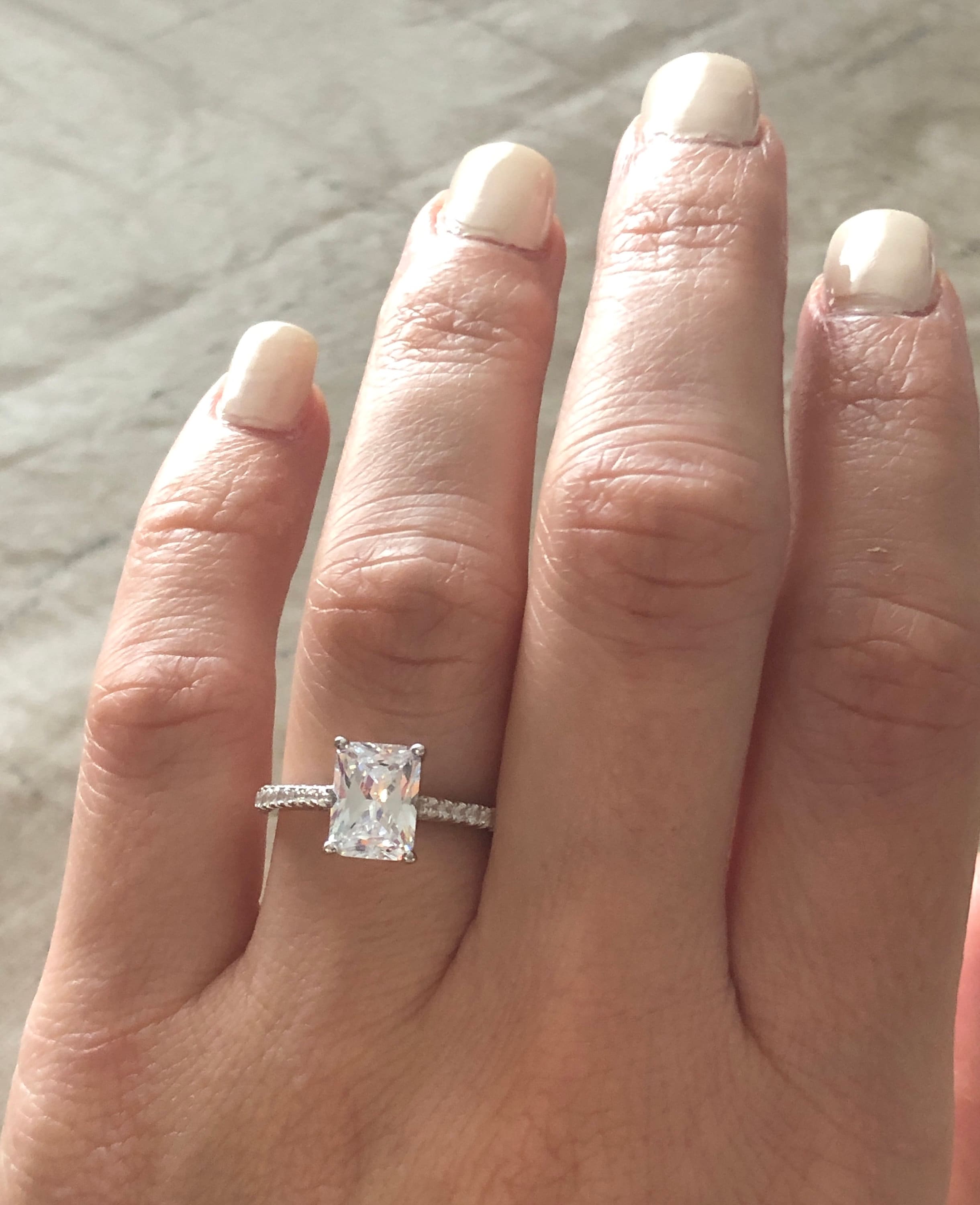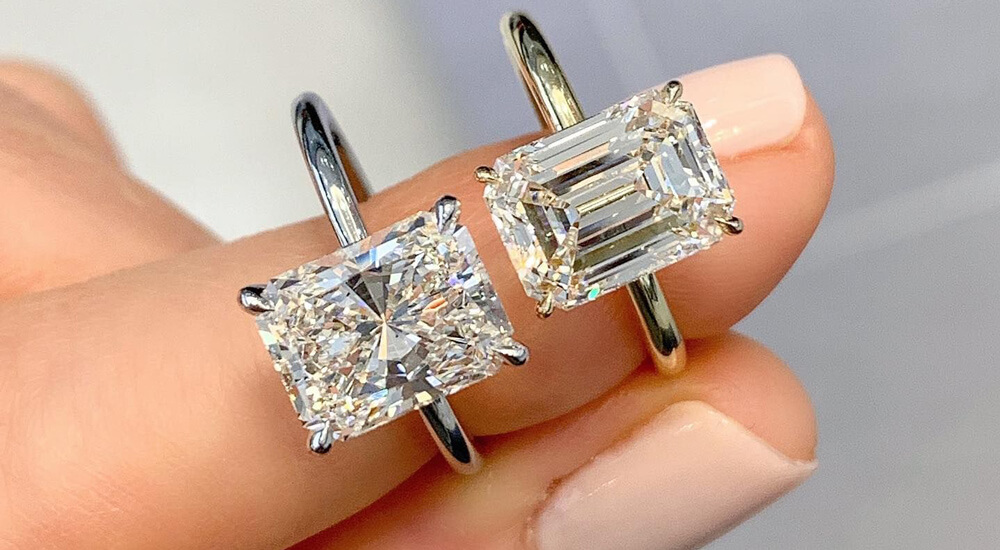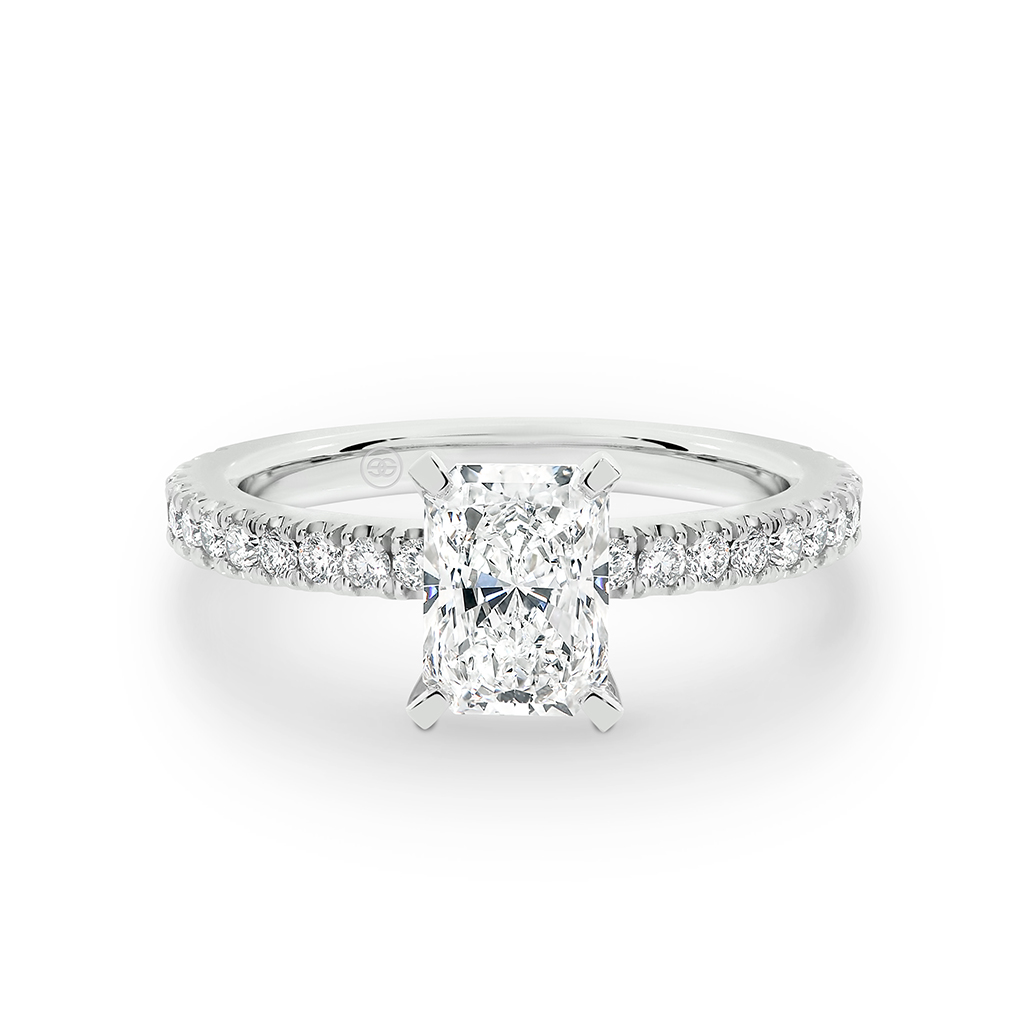


These pointed edges are less durable than the beveled radiant cut, meaning they need to be protected with prongs that either cover the points or wrap 90° around each corner. However, princess cut diamonds have sharp, prominent corners that create a much more angular appeal when compared to the beveled edges of a radiant cut diamond. In contrast, an emerald-cut diamond has just 58 facets, which are much larger and form a “step cut”.⚖️ A radiant cut sports 70 small facets crafted to maximize brilliance and imitate the sparkle of a round diamond. Unlike the fairly modern radiant cut, the emerald cut itself is incredibly old: the first recorded emerald-cut stones are from the 1500s!įurthermore, when it comes to faceting, these two cuts couldn’t be more different.

That’s about all these two diamond cuts have in common, though.

Both cuts are also fairly rare, with emerald cuts making up only 3% of the diamond population! Similarly, both cuts feature beveled corners to defend against chipping and cracks. Radiant and emerald-cut diamonds can both have a rectangular shape, namely when a radiant cut stone has an elongated silhouette. Here’s how a radiant cut diamond differs from other familiar squared shapes: Radiant cut vs. While it’s clear how a squared radiant cut diamond differs from a round brilliant, the differences between the radiant style and other square or rectangular cuts are less obvious. How does the radiant cut differ from other similar cuts?Īs mentioned above, the radiant cut is eerily similar to other diamond cuts. These beveled corners reduce chipping and create a more contemporary look that’s excellent for active lifestyles. Regardless, each radiant cut diamond has “beveled” or cut corners that are reminiscent of an Asscher cut stone. Speaking of shape, a radiant cut diamond may sport a square or rectangular silhouette depending on the style. Unlike the mirrored facets of other elongated shapes, the “crushed ice” facets of the radiant cut can mask imperfections just like other diamond shapes with brilliant cuts. This increase in light performance leads to a significant boost in fire, brilliance, and scintillation, producing a square diamond that rivals a round brilliant! Combining the clean lines and slim silhouette of emerald-cut diamonds and the brilliance of round gems, Grossbard invented a diamond shape that can withstand most wear and tear and keep on sparkling.🌟Ī radiant cut features 70 facets crafted with the utmost precision for optimal light play. To do so, he used the work of Basil Watermeyer-father of the Barion cut-to produce an octagonal cut style that optimized the brilliance of a square diamond.Īs a result, Grossbard created a diamond cut that offered a modern take on the "Old World" charm of the emerald, round brilliant, and even Asscher cuts. The radiant cut style is relatively new, as it’s only about 40 years old! Henry Grossbard, a New York diamond cutter, crafted the first example of a radiant cut in the 1970s.


 0 kommentar(er)
0 kommentar(er)
